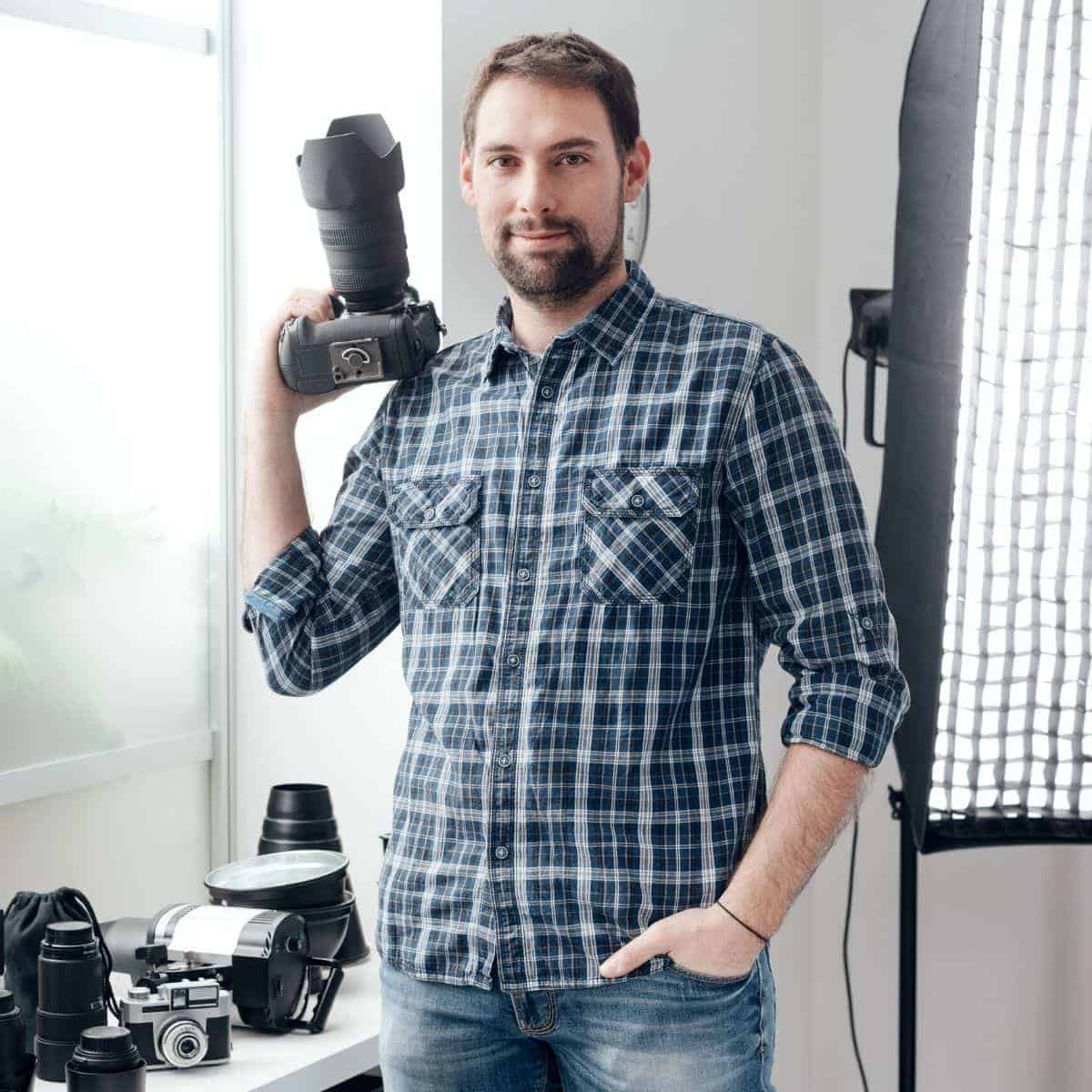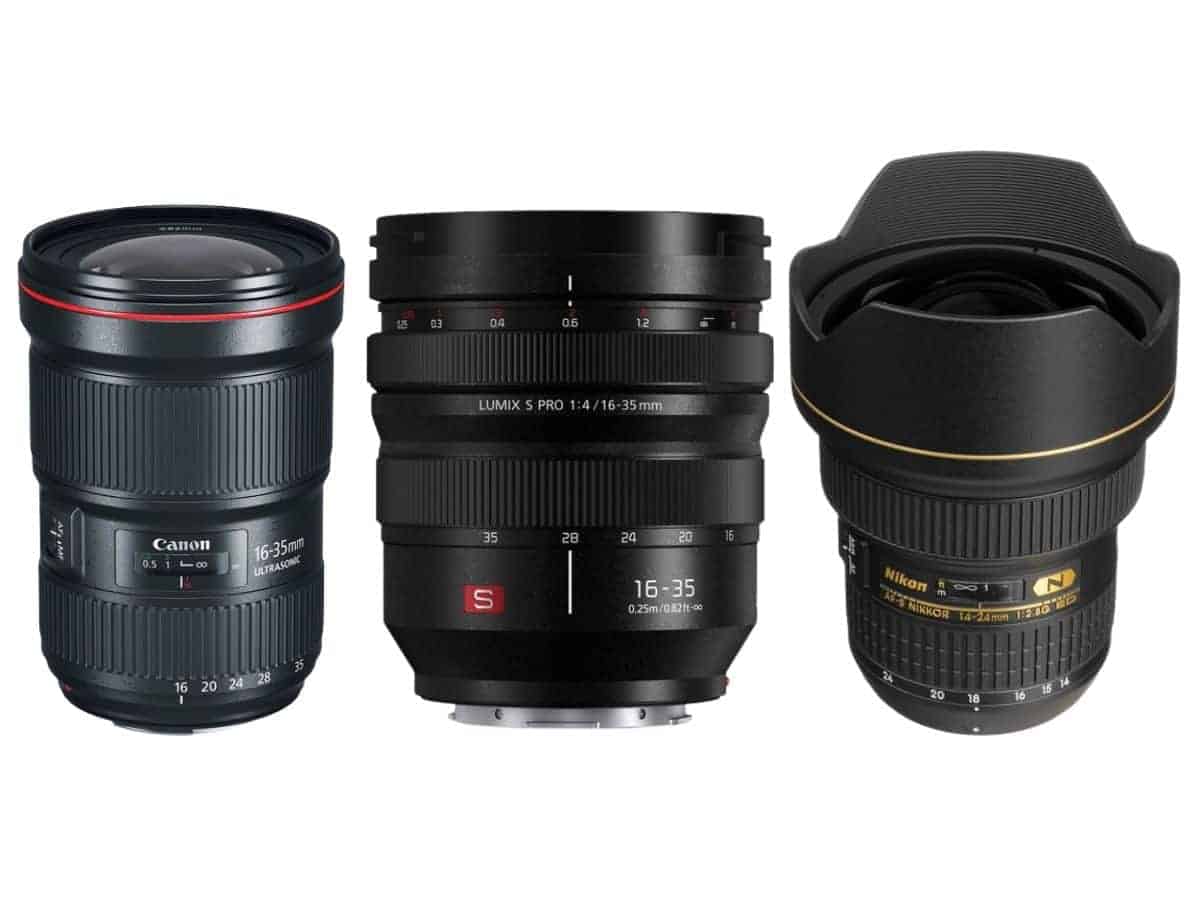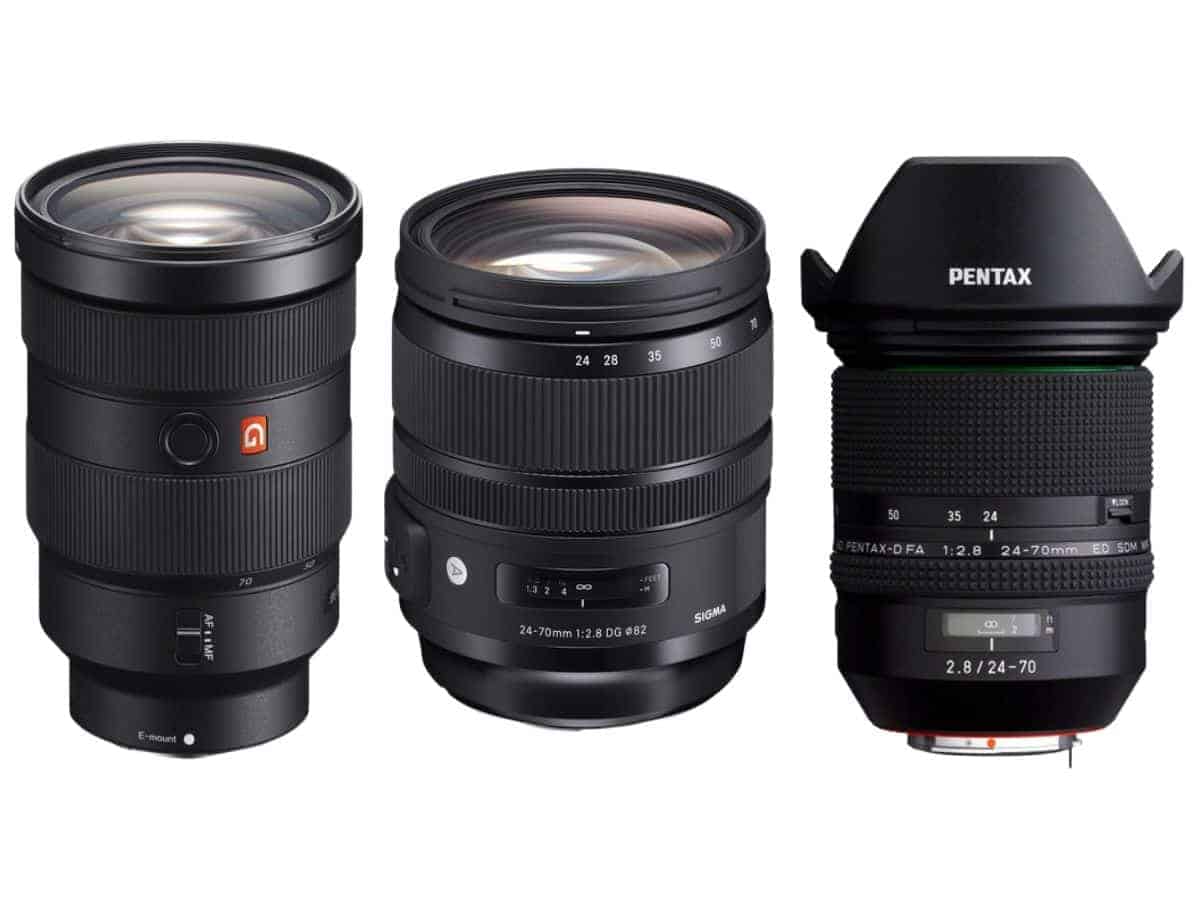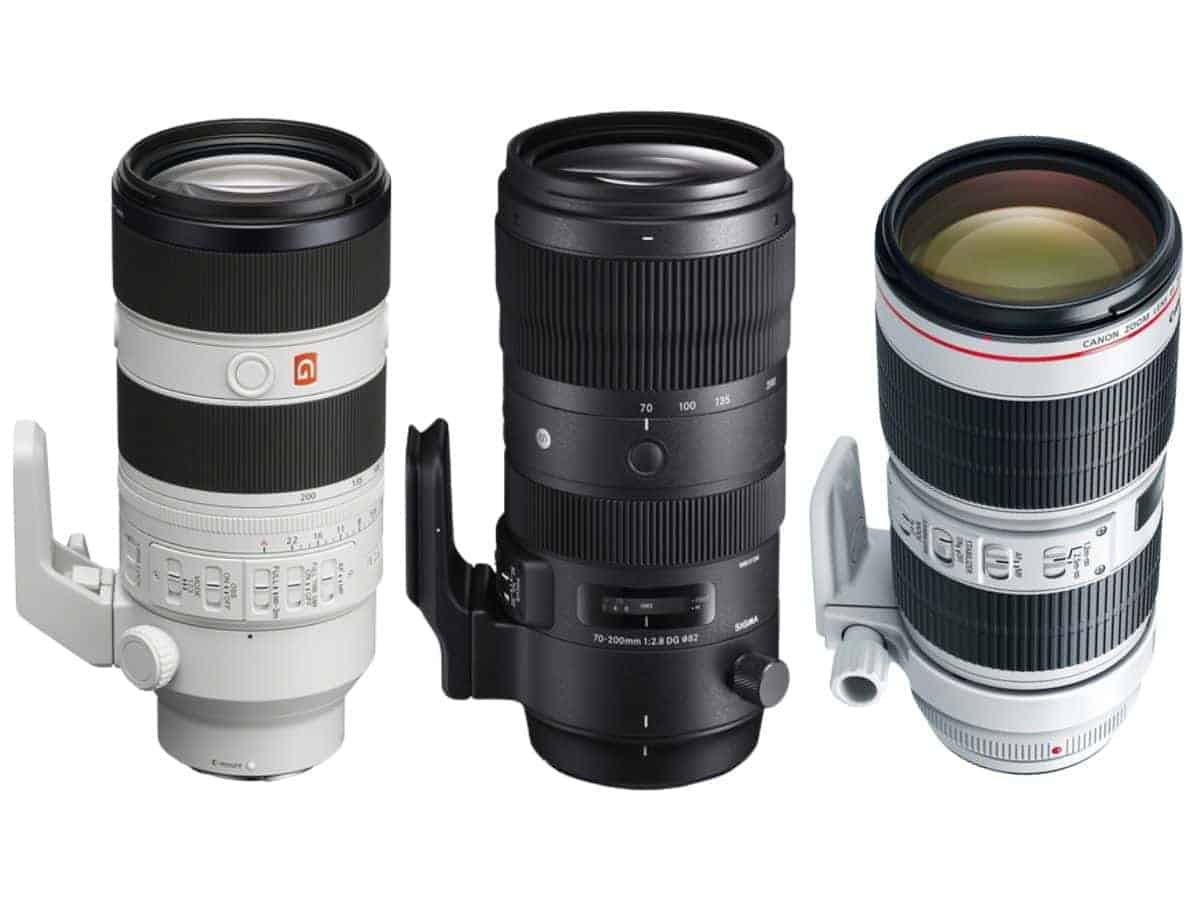The Holy Trinity of Lenses refers to the three must-have lenses that can benefit any photographer. Learn what they are.

Holy Trinity of lenses works for most photographers
Before diving into the Holy Trinity of lenses, it’s important to note that it’s excellent for most photographers, but not all.
Wildlife and aerial photography are two examples that won’t need the Trinity of lenses. It’s more of a nice to have.
Related: What’s a telephoto lens, and is it worth it?
If you’re a wildlife or aerial photographer, you can have the three lenses, but you may not use them as much as longer focal length lenses.
If you love general photography and want the ability to photograph different subjects, the Holy Trinity of lenses applies to you.
Related: Understanding shutter speed in photography
Each of the lenses is a zoom lens. While prime lenses are incredible, the Holy Trinity of lenses consists of zoom lenses because of their versatility.
With each lens, you get a wide range of focal lengths. It’s best if you could only have three lenses.
With that said, the following are the three must-have lenses.
1. 16-35mm lens

First up is the 16-35mm zoom lens. The purpose is to have a wide-angle lens, which allows you to get close to a subject and show a wide field of view.
Related: Best camera brands in 2021
It’s excellent for capturing landscapes, wide-angle portraits, cars, nature, and anytime you want a fish-eye look.
Canon, Nikon, Sony, Panasonic, Leica, and many other brands offer a 16-35mm lens.
You can also find similar lenses, such as the 17-40mm, 11-20mm, 14-24mm, and 16-28mm.
The following are excellent wide-angle zoom lenses from a variety of brands:
- Canon EF 16-35mm f/2.8L III USM Lens. Buy for $2,199 from B&H.
- Nikon AF-S NIKKOR 14-24mm f/2.8G ED Lens. Buy for $1,746.95 from B&H.
- Sony FE 16-35mm f/2.8 GM Lens. Buy for $1,998 from B&H.
- Tamron 17-28mm f/2.8 Di III RXD Lens for Sony E. Buy for $899 from B&H.
- FUJIFILM XF 10-24mm f/4 R OIS WR Lens. Buy for $999 from B&H.
- Panasonic Lumix S PRO 16-35mm f/4 Lens. Buy for $1,497.99 from B&H.
- Leica Super-Vario-Elmar-SL 16-35mm f/3.5-4.5 ASPH Lens. Buy for $6,295 from B&H.
The exact one doesn’t matter. As long as you have a wide-angle zoom lens, you’ll have the first of the three essential lenses.
2. 24-70mm lens

The 24-70mm lens is often referred to as the best all-around lens. It covers wide-angle, standard, and short telephoto.
If you’re traveling and could only bring one lens, the 24-70mm is the one to choose. It’ll allow you to capture photos at a variety of focal lengths.
Related: Canon EOS 90D review
Its versatility in the range is the most appealing aspect of the lens. Most types of photography can find good use for it.
The following are the best 24-70mm lenses from different brands:
- Canon EF 24-70mm f/2.8L II USM Lens. Buy for $1,899 from B&H.
- Sigma 24-70mm f/2.8 DG OS HSM Art Lens for Canon EF. Buy for $1,299 from B&H.
- Nikon AF-S NIKKOR 24-70mm f/2.8E ED VR Lens. Buy for $2,096.95 from B&H.
- Sony FE 24-70mm f/2.8 GM Lens. Buy for $1,998 from B&H.
- Rokinon 24-70mm f/2.8 AF Zoom Lens for Sony E. Buy for $999 from B&H.
- Panasonic Lumix S PRO 24-70mm f/2.8 Lens. Buy for $2,197.99 from B&H.
- Pentax HD Pentax-D FA 24-70mm f/2.8ED SDM WR Lens. Buy for $1,296.95 from B&H.
- Leica Vario-Elmarit-SL 24-70mm f/2.8 ASPH. Lens. Buy for $2,795 from B&H.
With the 24-70mm lens, you can snap excellent portraits, landscapes, architecture, and anything you want to take a photo of throughout the day. It’s the perfect everyday lens.
Related: Panasonic Lumix GH5 II review
3. 70-200mm lens

The final lens in the Holy Trinity of lenses is the 70-200mm lens. It’s one of the most popular lenses among all types of photographers because it goes from a short to medium telephoto range.
The 70-200mm lens allows you to take close-up photos without being too close to the subject.
In portrait photography, the telephoto zoom lens works well because it captures a flattering and accurate depiction of your subject’s face.
Additionally, it offers excellent separation from the background. You can shoot with a smaller aperture and still have bokeh.
Aside from portrait photography, you can use it for landscapes, wildlife, events, and any other time you want or need to be further away.
The best 24-70mm lenses are as follows:
- Canon EF 70-200mm f/2.8L IS III USM Lens. Buy for $2,099 from B&H.
- Tamron SP 70-200mm f/2.8 Di VC USD G2 Lens for Canon EF. Buy for $1,299 from B&H.
- Nikon AF-S NIKKOR 70-200mm f/2.8E FL ED VR Lens. Buy for $2,346.95 from B&H.
- Sigma 70-200mm f/2.8 DG OS HSM Sports Lens for Nikon F. Buy for $1,499 from B&H.
- Sony FE 70-200mm f/2.8 GM OSS II Lens. Buy for $2,798 from B&H.
- Pentax HD PENTAX D FA* 70-200mm f/2.8 ED DC AW Lens. Buy for $1,796.95 from B&H.
- Panasonic Lumix S PRO 70-200mm f/2.8 O.I.S. Lens. Buy for $2,597.99 from B&H.
You’ll have a lot of long-distance versatility with the 70-200mm. It’s an essential lens, and it may quickly become a favorite.
F/2.8 or F/4 version?
With the Trinity of lenses, a maximum aperture of f/2.8 is ideal. However, there are f/4 versions, which are also cheaper.
The f/2.8 version is the best because it opens wide and allows a lot of light in, which means you can shoot during low-light conditions.
It also has a shallower depth of field, which gives you a smooth and blurry background.
Strive for the f/2.8 versions, but get the f/4 version if you can’t get f/2.8.
Extend your range with a teleconverter
To take your focal length range to the next level, use a teleconverter.
Related: How to find your camera’s shutter count
Typically, you’ll find teleconverters with a magnification factor of 1.4, 1.7, or 2 times.
They also cost around $400 or $500, which is cheaper than buying a new lens.
A 2X teleconverter can extend your 70-200mm lens all the way to 400mm. That means your Holy Trinity of lenses can have a range from 16mm to 400mm.
Related: Canon EF to Sony adapter guide
With three lenses and a teleconverter, that’s an amazing range. Plus, you can use it for any type of photography.
Be sure to get one that’s compatible with your camera and lens.
Create your Holy Trinity of lenses
The 16-35mm, 24-70mm, and 70-200mm is the standard Holy Trinity of lenses. However, you can create your own combination.
For example, a limitation of the Trinity of lenses is that the maximum aperture is f/2.8.
Related: What’s an interchangeable lens camera (ILC)?
As a portrait photographer, you may want something that opens wider, is faster, and produces sharper images.
For that, you’d need a prime lens with a large maximum aperture, such as f/1.8 or f/1.4.
If all you shoot are portraits, your Holy Trinity of lenses may be a 35mm, 50mm, and 85mm prime lens.
For wildlife photographers, the 70-200mm is potentially your shortest lens.
Related: How to develop an efficient photography workflow
Then, you can get another zoom lens, such as a 100-600mm and a 400mm or 800mm prime lens.
Regardless, you can customize the Trinity of lenses to fit your style of photography.
Conclusion
There are so many lenses on the market. Whether you’re new to photography or a seasoned professional, you have many options.
By having the Holy Trinity of lenses, you’ll have a wide range of focal lengths available.
Remember, it depends on the type of photography you do.
Overall, the 16-35mm, 24-70mm, and 70-200mm are the three most beneficial lenses you need to have in your kit.
Featured image courtesy of Canva.

